History
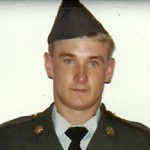 Once a war is over, the people of the world, and especially those who fought in the war never really want to think about it again, but it is, nevertheless, a permanent part of history. It was on this day, January 16, 1991 that America would go to war with Iraq for the first time, and it would be a war that would ultimately draw my brother-in-law, Ron Schulenberg back into the service from the reserves, which is where every soldier is for a time following their active duty term. Ron had joined the Army during a time when things were relatively quiet around the world, and he also ended his active service during a relative time of peace, but all that would change for him when he was notified that he would have to go back to active duty, and to Iraq.
Once a war is over, the people of the world, and especially those who fought in the war never really want to think about it again, but it is, nevertheless, a permanent part of history. It was on this day, January 16, 1991 that America would go to war with Iraq for the first time, and it would be a war that would ultimately draw my brother-in-law, Ron Schulenberg back into the service from the reserves, which is where every soldier is for a time following their active duty term. Ron had joined the Army during a time when things were relatively quiet around the world, and he also ended his active service during a relative time of peace, but all that would change for him when he was notified that he would have to go back to active duty, and to Iraq.
I can only imagine how Ron felt upon receiving that letter. I know how the rest of us felt. We were very concerned for Ron’s safety. None of us wanted him to go, but this was not up to us. The government, and specifically the Army had spoken, and go he would. I remember talking to him about his time over there, years later. One of the things that most civilians wonder about is things like how they felt about killing someone else, or even just seeing a dead body that had been mutilated by the weapons of warfare. For Ron, one of the 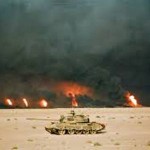 strongest memories was marching from one place to another and seeing all the death that was all around them…and then simply stepping over it, like it was a rock or tree stump. In my mind, that would be almost impossible to do, but I suppose that you simply get used to some things…or as much as anyone can get used to war and death.
strongest memories was marching from one place to another and seeing all the death that was all around them…and then simply stepping over it, like it was a rock or tree stump. In my mind, that would be almost impossible to do, but I suppose that you simply get used to some things…or as much as anyone can get used to war and death.
The Persian Gulf War…known as Operation Desert Storm, was a short lived war. Saddam Hussein invaded the little country of Kuwait, because of their oil, making Egypt and Saudi Arabia very nervous, so they called on the United States. When Saddam Hussein refused to leave Kuwait, the war began. The biggest anomaly in Operation Desert Storm, was that the Iraqi soldiers were either not well enough equipped, or simply not willing to die for this cause, and so may of them actually came up to the American troops, and surrendered. I’m sure that the initial fighting, and the amount of war dead lying around the desert, made the decision to surrender seem like the best option. Ron told of this anomaly when we talked about his experiences, and it seemed that it was with a continued sense of relief. I can imagine that the thought of having to kill someone was not one that my brother-in-law relished, but something he would have had to do, had it became necessary.
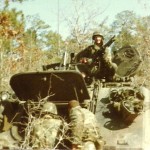
Ron returned to us from Operation Desert Storm, and his time in the reserves ended. The Persian Gulf area would continue to become more and more unstable, but by the time America would again find herself at war with Iraq and Saddam Hussein, Ron was not required to go. While it is my belief that the second war with Iraq has been far more successful, it has also been filed with far more casualties. I believe that if we had gone in and removed Saddam Hussein during Operation Desert Storm, the world would have been a better place. Would that have prevented the need to go back? I don’t know, but it would have spared many of the lives of the countless people that Saddam Hussein slaughtered during his time in power.
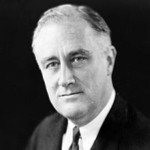
 In the height of World War II, on January 14, 1943, President Franklin D Roosevelt made history when he became the first president to travel by airplane on official business. The trip was not without danger. The German U-boats were wreaking havoc on Allied war ships in the Atlantic, and it was decided that a face to face conference was needed to discuss strategy. The man President Roosevelt was going to see, was my fifteenth cousin once removed, Winston Spencer-Churchill. No American President had flown on official business before, but with security in the Atlantic uncertain, Roosevelt’s advisors reluctantly agreed that he should fly. I’m sure his frail health at 60 years of age played a part in their decision too. The secret trip began on January 11, and the plane had to make several stops along the way. They took off from Florida with a first stop in the Caribbean to refuel and allow the president to rest. They then took off and headed south along the South American coast to Brazil, then across the Atlantic to Gambia, finally reaching Casablanca on this day, January 14, 1943.
In the height of World War II, on January 14, 1943, President Franklin D Roosevelt made history when he became the first president to travel by airplane on official business. The trip was not without danger. The German U-boats were wreaking havoc on Allied war ships in the Atlantic, and it was decided that a face to face conference was needed to discuss strategy. The man President Roosevelt was going to see, was my fifteenth cousin once removed, Winston Spencer-Churchill. No American President had flown on official business before, but with security in the Atlantic uncertain, Roosevelt’s advisors reluctantly agreed that he should fly. I’m sure his frail health at 60 years of age played a part in their decision too. The secret trip began on January 11, and the plane had to make several stops along the way. They took off from Florida with a first stop in the Caribbean to refuel and allow the president to rest. They then took off and headed south along the South American coast to Brazil, then across the Atlantic to Gambia, finally reaching Casablanca on this day, January 14, 1943.
It seems strange to us now that they would take such a roundabout route, but things were different then. The Boeing 314 Flying Boat that had been dubbed the Dixie Clipper was a big heavy plane. It had a flight range of 3,500 miles, and the direct route would have been about 4326 miles, making at lease one stop necessary. Since the Secret Service considered air travel for a president as risky anyway, I’m sure they wanted to take a 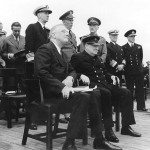 route that would keep them as far away from any fighting as they could. Also, the final leg of the trip required that the group transfer to an Army transport plane. The C-54 was required to fly at 15,000 feet to cross the Atlas Mountains…an altitude that seems insignificant today, but must have been quite high then. The Secret Service personnel and FDR’s advisors were worried about the oxygen levels affecting the president, and in the end, he did have to go on oxygen for a time during that part of the flight.
route that would keep them as far away from any fighting as they could. Also, the final leg of the trip required that the group transfer to an Army transport plane. The C-54 was required to fly at 15,000 feet to cross the Atlas Mountains…an altitude that seems insignificant today, but must have been quite high then. The Secret Service personnel and FDR’s advisors were worried about the oxygen levels affecting the president, and in the end, he did have to go on oxygen for a time during that part of the flight.
The flight was mastered successfully, and the two men were safely tucked into the Anfa Hotel where Roosevelt and Churchill were both in suites that were close together, making it the perfect place for the conference to take place…after the rooms were cleared of listening devises that had been planted by unknown persons, that is. The advisors and chiefs of staff did most of the hard work of the negotiations, but the presence of Roosevelt and Churchill kept them on task and working toward an agreement. The conference was very important to both sides, as the British were being hit very hard, and Roosevelt needed to keep the American troops advancing and winning their battles, so he could demonstrate to the American people that the tide of this war was turning. People get weary of war quite quickly, and in order to keep their support, victory in battle is key.
The Casablanca Conference was looked at by some as a victory for the British negotiators, because Churchill’s strategy prevailed, but they had missed the fact that the Americans also gained British commitments to long-term goals that went beyond the immediate objectives in the Mediterranean. The Americans agreed to attack Sicily after the victory in North Africa and the British agreed to allow a massive buildup of Allied Forces in 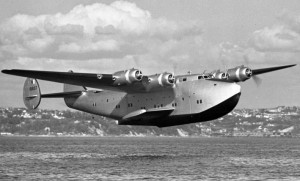 Britain, which would allow for an invasion of France with a target date of May 1, 1944. The invasion actually took place on June 6, 1944, and would become a day we all know as D-Day, when the troops stormed the beaches of Normandy…and that is where my dad came in. Since he was one of the Allied Forces that was stationed in England, his B-17G Bomber was one of those that provided cover for that invasion. It seems quite strange to me that a conference that took place over a year before, and 2 months prior to my dad’s enlistment, would ultimately place him in a position to fight in one of the most well known battles of World War II.
Britain, which would allow for an invasion of France with a target date of May 1, 1944. The invasion actually took place on June 6, 1944, and would become a day we all know as D-Day, when the troops stormed the beaches of Normandy…and that is where my dad came in. Since he was one of the Allied Forces that was stationed in England, his B-17G Bomber was one of those that provided cover for that invasion. It seems quite strange to me that a conference that took place over a year before, and 2 months prior to my dad’s enlistment, would ultimately place him in a position to fight in one of the most well known battles of World War II.
 I don’t know about you, but as a kid in grade school, recess was maybe the best part of the day…if you could get to the swings faster than anyone else. At the school I went to anyway, the swings were the one playground item everyone wanted to be on, and if you were a little slower getting there, you missed out. That usually meant that the younger students had to find something else to do…until they got older anyway. There was no time limit to be on the swings, but most of the kids were pretty good about swinging for a while and then getting off, but then recess was only 15 minutes long, so how much time did that leave the rest of the kids…not much.
I don’t know about you, but as a kid in grade school, recess was maybe the best part of the day…if you could get to the swings faster than anyone else. At the school I went to anyway, the swings were the one playground item everyone wanted to be on, and if you were a little slower getting there, you missed out. That usually meant that the younger students had to find something else to do…until they got older anyway. There was no time limit to be on the swings, but most of the kids were pretty good about swinging for a while and then getting off, but then recess was only 15 minutes long, so how much time did that leave the rest of the kids…not much.
The fight to get to the swings first, and the ultimate lose of that battle for many  children, did very little to sway them from trying to get there, however. Every recess, the bell would ring, and the doors to the playground burst open as the kids ran for the swings. Of course, a few tears were inevitable, because there are always the little fights and little ones don’t always lose well, but all in all, they learned pretty quickly that the best solution to the problem, was to practice your running. The faster you are, the more likely you will end up with a swing.
children, did very little to sway them from trying to get there, however. Every recess, the bell would ring, and the doors to the playground burst open as the kids ran for the swings. Of course, a few tears were inevitable, because there are always the little fights and little ones don’t always lose well, but all in all, they learned pretty quickly that the best solution to the problem, was to practice your running. The faster you are, the more likely you will end up with a swing.
This whole process goes on for a time, and then about 6th grade, which was still in grade school when I was a kid, the kids aren’t so interested in the swings anymore. They have started to mature some and look forward to being more like the kids in junior high, or middle school as it is known today. Playing on the swings was suddenly 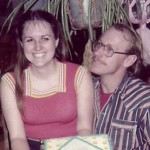 beneath them. How quickly things change. One year, you are fighting over the swings, and the next you are acting like all those little kids are so far beneath you that it is completely unbelievable.
beneath them. How quickly things change. One year, you are fighting over the swings, and the next you are acting like all those little kids are so far beneath you that it is completely unbelievable.
Now flash forward a few years, and…well, I don’t know about you, but it’s funny how much fun those swings can be when you are on a date with your boyfriend. Of course, anything is romantic when you are on a date, right? In the years I dated my husband, Bob, I can’t count how many times we ended up at the park swinging on the swings like little kids. It seemed so different from those grade school days, somehow. It wasn’t nearly as juvenile as it used to be. Now it was romantic…and fun again.
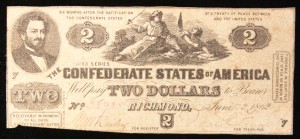 Lately, I have been thinking about the Civil War. I think that most of us have an ancestor or two who fought in the Civil War, possibly from both sides. This was a bloody war that really seems to have been a matter of who could hold out the longest. In the end both sides found themselves scavenging everything from food and water to ammunition from the people who lived in the area. But, the really bad part about the Civil War, was that because the South had succeeded from the Union, and had made their own money, they had a serious problem upon losing the war. After their loss, the South once again became a part of the Union, and their money became worthless.
Lately, I have been thinking about the Civil War. I think that most of us have an ancestor or two who fought in the Civil War, possibly from both sides. This was a bloody war that really seems to have been a matter of who could hold out the longest. In the end both sides found themselves scavenging everything from food and water to ammunition from the people who lived in the area. But, the really bad part about the Civil War, was that because the South had succeeded from the Union, and had made their own money, they had a serious problem upon losing the war. After their loss, the South once again became a part of the Union, and their money became worthless.
These were people who had owned plantations and slaves. They were among the wealthiest people in the 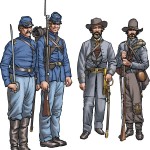 nation. Suddenly they found themselves broke…unless they happened to own gold, and I don’t think many of them did. People had loads of cash, but it wouldn’t buy anything. It might as well have been counterfeit. Not only that, but the entire banking system fell apart. The South found itself in the unique position of not only losing the war, but of losing itself. They were trying to become their own nation, but when they lost the war, they lost their nation. Then, to make matters worse, they lost the money they had too.
nation. Suddenly they found themselves broke…unless they happened to own gold, and I don’t think many of them did. People had loads of cash, but it wouldn’t buy anything. It might as well have been counterfeit. Not only that, but the entire banking system fell apart. The South found itself in the unique position of not only losing the war, but of losing itself. They were trying to become their own nation, but when they lost the war, they lost their nation. Then, to make matters worse, they lost the money they had too.
The whole financial system for them had to be rebuilt. Add to the fact that their side lost the war, the fact that these previously wealthy southern gentlemen and women were now broke, and were forced to work for a living. Their slaves were free, and if they wanted them to work for them, they had to pay them…but with what. The governments war debts were hard enough to deal with, but the individual was in much deeper trouble, because if they had no money, they had no food. There was no money to buy seeds to plant, or cattle to raise…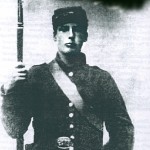 or even ammunition to hunt with, if there was anything left to hunt after your neighbors hunted ahead of you.
or even ammunition to hunt with, if there was anything left to hunt after your neighbors hunted ahead of you.
In the end, I suppose that the only solution was time. Thankfully, the difference between being broke and having money is one paycheck. Debt is something people can learn to live with. There will always be bills to pay, and the family that can keep from borrowing money will do better than the one that must borrow to make ends meet. And the biggest problem they had was that there was no place to borrow from. The people of the south had to learn to work…and that was going to be something very new to most of them.
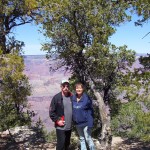
 In this country, we have been blessed to have people who recognize a national treasure for what it is, and make sure that it gets preserved for people in generations to come to be able to enjoy it too. In my life, I have been blessed to visit many of these treasures, like Yellowstone National Park, Mount Rushmore, Crazy Horse Mountain, Glacier National Park, Niagara Falls, and the Grand Canyon…which was made a national monument on this day, January 11, 1908. Of course, the Grand Canyon was formed thousands of years ago, but it wasn’t until someone looked at it and saw the beauty it could share with so many people, if it was protected from land developers, mining companies, and other such developers who could only see it for its monetary value.
In this country, we have been blessed to have people who recognize a national treasure for what it is, and make sure that it gets preserved for people in generations to come to be able to enjoy it too. In my life, I have been blessed to visit many of these treasures, like Yellowstone National Park, Mount Rushmore, Crazy Horse Mountain, Glacier National Park, Niagara Falls, and the Grand Canyon…which was made a national monument on this day, January 11, 1908. Of course, the Grand Canyon was formed thousands of years ago, but it wasn’t until someone looked at it and saw the beauty it could share with so many people, if it was protected from land developers, mining companies, and other such developers who could only see it for its monetary value.
In my lifetime, I have had the opportunity to visit the Grand Canyon three times. Each time was significantly different from the others. The first time was as a child, and that trip stands out in my mind as the discovery trip. This was a place I had never seen before and probably hadn’t even thought about, but my parents knew of its existence, and that they wanted their girls to be able to see its glorious beauty. I don’t recall feeling wary of it edges, but that was probably because I was the kid, and not the parent who had the task of watching the kids. I just remember that its red walls were gorgeous, especially at sunset. It was a trip taken almost fifty years ago, but I can still remember how amazing it was.
The second trip I took to the Grand Canyon was in 1986, when my husband, Bob Schulenberg and I took our girls, Corrie and Amy to see it. The trip taken as a mother was one that felt a bit different. My girls weren’t so little, and eleven and ten, that they didn’t stay right with us, but nevertheless, Amy found herself just a little too close to the unfenced edge, and she slipped a little. By the grace of God, she didn’t fall in, but it is an event she still talks about to this day. I think she would go back again, because she was not really afraid, once the moment passed, but she gained a respect for edges like that. As the mom, I determined to put myself between the children and the edge from that point on. We still very much enjoyed that trip, but it was very different from either of the others.
The most recent trip Bob and I took to the Grand Canyon was in April of 2009, and it was probably the most fun trip of the three. We didn’t have to worry about little ones, and we were both in good shape. We hiked the 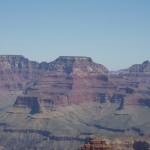
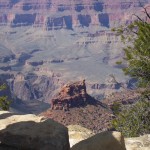 southern edge of the canyon, and went down into it at both ends of the trail. It was an amazing trip. Looking at the canyon from the top is awesome, but there is something about being down inside it that will always live in my memory files. It wasn’t that the canyon looked so very different when you were inside, but rather that you were inside the Grand Canyon that made that event special. I loved being able to go down the trails and through the tunnel we found there, and see the magnificent beauty up close. It was an amazing trip, and I happily would go again. The Grand Canyon is unforgettable.
southern edge of the canyon, and went down into it at both ends of the trail. It was an amazing trip. Looking at the canyon from the top is awesome, but there is something about being down inside it that will always live in my memory files. It wasn’t that the canyon looked so very different when you were inside, but rather that you were inside the Grand Canyon that made that event special. I loved being able to go down the trails and through the tunnel we found there, and see the magnificent beauty up close. It was an amazing trip, and I happily would go again. The Grand Canyon is unforgettable.
 I was looking at some of my uncle, Bill Spencer’s family history information yesterday, and I came across a comment he made about some of the pictures. It was about the National Youth Administration that was transferred to the War Manpower Commission in 1941. When he mentioned that it was about educating the nation’s youth, I immediately got on the defensive, because I thought that it almost sounded like the Nazis pulling children out of their homes to train them the way the government wanted them to be trained. Of course, that couldn’t be further from the truth. In reality, and had I read the rest of Uncle Bill’s comments before I got touchy about it, I would have known that. I think sometimes, we have a preconceived idea about things, and we don’t really understand exactly what is going on before we fly off the handle.
I was looking at some of my uncle, Bill Spencer’s family history information yesterday, and I came across a comment he made about some of the pictures. It was about the National Youth Administration that was transferred to the War Manpower Commission in 1941. When he mentioned that it was about educating the nation’s youth, I immediately got on the defensive, because I thought that it almost sounded like the Nazis pulling children out of their homes to train them the way the government wanted them to be trained. Of course, that couldn’t be further from the truth. In reality, and had I read the rest of Uncle Bill’s comments before I got touchy about it, I would have known that. I think sometimes, we have a preconceived idea about things, and we don’t really understand exactly what is going on before we fly off the handle.
The education effort that my uncle was talking about was set up by the National Youth Administration through the War Manpower Commission, and had to do with the upcoming and inevitable entrance of the United States into World War II. The skills that were going to be needed to build the equipment needed for our troops to fight in the war were very different from the skills the nation’s youth had at that time, because many of them were farmers. The nation was going to need welders, machinists, and sheet metal workers desperately. The training program was designed to provide training for youth 16 to 25 years of age. The plan was that the ones who were not drafted could help with the war effort at home.
It was this program that trained my dad, Uncle Bill, Aunt Laura, and Aunt Ruth to weld, and gave them jobs in the shipyards in several different capacities, mostly as Rosie the Riveters. Of course, while Uncle Bill did a similar job to the ones done by his sisters, I don’t think he would take too kindly to the name Rosie the Riveter. Nevertheless, it was on May 1, 1942 that Uncle Bill began his training, and shortly there after, he talked my dad into doing the training too. Uncle Bill had hoped that welding would keep them both on the home front, but when that was not to be, they both went to sign up. Dad was accepted, but Uncle Bill was not, because of flat feet and a hernia. Still, the welding skill was not something that would ever be a waste where my dad was concerned, because he worked as a welder for most of his life after the war was over.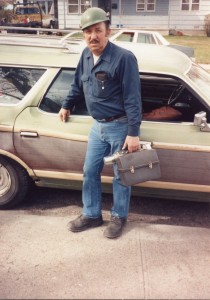
The National Youth Administration officially operated from June 26, 1935 to 1939, and was designed to provide training and help find jobs for people during the Great Depression. It was part of The New Deal programs set up by President Franklin D Roosevelt during his first term in office. I don’t often agree with government run programs, I suppose this one had it’s place. Many of the people who benefitted from the chance to train themselves for a new skill were farmers who didn’t have many other skills, and it was the training my dad received there that supported our family for his entire working life. The National Youth Administration was officially transferred to the War Manpower Commission in 1942, and officially folded in 1943. It was most likely due to lack of funding to continue the program, but I suppose it served a greater purpose during the war years, and now was no longer necessary.
 For the past several weeks, I have been exchanging emails and lots of information with a man named John B Knox. He is my husband, Bob Schulenberg’s sixth cousin once removed. I came across his website about a year or so ago, but it wasn’t until recently that I decided to contact him. This was such a great decision on my part, because it has been an interesting journey. Because John had the last name of Knox, and some of the same relatives that I knew to be in the Knox line of my mother-in-law’s family, I had no doubt in my mind that we are related, but I didn’t know the exact relationship. Finding someone who is a descendant of an aunt or uncle back in the 1800s and especially beyond that, isn’t as easy as one might think. It is very helpful when you find someone who has researched their family history as well as John has, because the research is more that half done. It was easy for John to connect our two lines and tell me exactly what the connection was. John is a very thorough person too, so he was able to send me an easy to follow diagram of the connection. Now, my family tree shows the connection to John and his family in detail.
For the past several weeks, I have been exchanging emails and lots of information with a man named John B Knox. He is my husband, Bob Schulenberg’s sixth cousin once removed. I came across his website about a year or so ago, but it wasn’t until recently that I decided to contact him. This was such a great decision on my part, because it has been an interesting journey. Because John had the last name of Knox, and some of the same relatives that I knew to be in the Knox line of my mother-in-law’s family, I had no doubt in my mind that we are related, but I didn’t know the exact relationship. Finding someone who is a descendant of an aunt or uncle back in the 1800s and especially beyond that, isn’t as easy as one might think. It is very helpful when you find someone who has researched their family history as well as John has, because the research is more that half done. It was easy for John to connect our two lines and tell me exactly what the connection was. John is a very thorough person too, so he was able to send me an easy to follow diagram of the connection. Now, my family tree shows the connection to John and his family in detail.
Getting to know John has been a lot of fun. He was born in Kentucky, but he and his family now live in Washington DC. I could try to summarize his career, but I think he says it best so I will quote it instead. According to John’s LinkedIn page, “I currently serve as a Congressional Liaison for the Defense Intelligence Agency (DIA). My background includes two decades+ of experience in management, strategic planning, change management, international business development, customer relations and team building. Highlights include my seven years as NASA’s Manager of Video Applications. The 35-member team that I led, using the world class production facilities that my team designed and built, won 44 awards on behalf of the space agency, including four Emmy’s. That record at NASA remains unmatched. I co-chaired the agency-wide Standards Committee for High Definition Television at NASA which established technical guidelines for the space agency’s transition to HDTV. Today, the guidelines which my group developed, continues to insure the interoperability of communications between each of NASA’s ten world-class research centers and the International Space Station. While serving as the DIA’s Contracting Office Manager in Baghdad, Iraq, I oversaw a “ground-up” conversion of twelve Iraqi buildings for use as DIA’s in-country Headquarters, Annex and billeting for deployed U.S. personnel. For this project, I was awarded DIA’s Civilian Combat Support Award. Most recently, I drafted, proposed and am currently leading the implementation the first Congressional Communications Strategic Plan for DIA. I hold a Bachelor’s Degree in Communications Technology, a Master’s Degree in Media Management (Magna Cum Laude graduate) and a Master Of Business Administration (MBA) Degree with a concentration in management.” All I could say to that was…”Wow!!”
This, of course, lets me know that I really knew nothing of the person, that I had so boldly contacted, and who so graciously contacted me back, and has helped me immensely with my inquiries. I have always known that the Knox family has been heavily into politics, and other areas of government work, and this Knox family member has obviously followed in the footsteps of his ancestors. I can’t say that I’m disappointed in that. I also know that his work at NASA interests me as well. I’m sure he would not have brought all this up to me on his own, because he never made the conversations we had about himself, but rather about the family history, and our connection to it. I think he is probably a humble man, and only put the information I gave here on LinkedIn, because that is what he was supposed to do on LinkedIn. Nevertheless, I must say that I am impressed with all he has done, and excited to know him and to get to know his family as wall. John and his wife Lisa have two daughters, Lindsey and Kelly. I am excited about this new branch of my family history, and I look forward to getting to know this family even better.
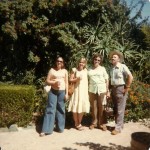
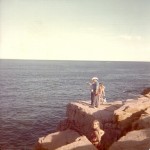 In 1980, my parents and younger sisters took a trip to California. It was a trip that would take them to the famous Golden Gate Bridge, as well as, drives along the Pacific Ocean, and relaxing time spent on the beach. It was the first of a number of trips my parents would take to California. They really loved that area. I would not get to see California until the late 1990s. I’m not sure what took me so long really.
In 1980, my parents and younger sisters took a trip to California. It was a trip that would take them to the famous Golden Gate Bridge, as well as, drives along the Pacific Ocean, and relaxing time spent on the beach. It was the first of a number of trips my parents would take to California. They really loved that area. I would not get to see California until the late 1990s. I’m not sure what took me so long really.
Today is a rather significant day in the history of San Francisco, and one that in reality makes any trip to California worth taking. It was on this day January 5, 1933 that work began on the rather controversial Golden Gate Bridge. I’m sure that most people would not think of the bridge as being controversial, but there were a lot of people who were against it because they thought it would ruin the beautiful view of the San Francisco Bay. I guess I can understand that to a degree, because I am someone who really doesn’t like change much, but when you look at the finished product, I would have to agree with most people when I say that I think this one was a good change. The bridge is a beautiful addition to the bay. I especially like its red color, which I suppose might seem a bit unusual for a bridge. Nevertheless, it does make this bridge stand out.
Still, why was the bridge necessary? When you look at the whole area, you find that you could have driven around the area. Nevertheless, I’m sure that back then, driving around would take too long. The idea was that if the land north of the bay was easier to access, it’s value would increase. It made sense, but while the idea was first presented in 1869, it was pretty much tabled until it was revisited in 1916, when a former engineering student named James Wilkins, who was working for the San Francisco Bulletin brought it up again. He proposed a suspension bridge with a center span of 3,000 feet which was nearly twice as long as any bridge in existence at the time. The expected cost was $100 million, but when the city engineer, Michael O’Shaughnessy, who is also credited for naming the Golden Gate Bridge began to ask around, he found Joseph Strauss, a 5 foot tall Cincinnati born Chicagoan who said he could do it for less. In fact, for $25 – 30 million, Strauss said he could build one with a 4,000 foot span.
The idea was well received, but the Great Depression would stall the construction until 1933 when bonds could be sold to make it happen. The bridge would take four years to complete, and so it first opened on May 27, 1937, as the longest bridge span in the world 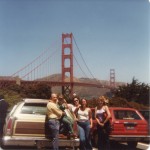
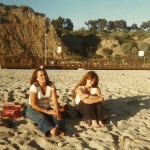 at that time. The first public crossing had taken place the day before, when 200,000 people walked, ran, and even roller skated across the bridge. It’s red paint job and its famous towers have made the Golden Gate Bridge an American landmark and popular tourist attraction ever since, and one that I am glad I got to see. While San Francisco’s temperatures don’t always appeal to me, the summers of which are not always warm, I do nevertheless, love visiting there. Like my parents, I find the California coast to be a pleasant change from the mountains of Wyoming.
at that time. The first public crossing had taken place the day before, when 200,000 people walked, ran, and even roller skated across the bridge. It’s red paint job and its famous towers have made the Golden Gate Bridge an American landmark and popular tourist attraction ever since, and one that I am glad I got to see. While San Francisco’s temperatures don’t always appeal to me, the summers of which are not always warm, I do nevertheless, love visiting there. Like my parents, I find the California coast to be a pleasant change from the mountains of Wyoming.
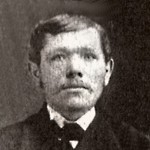 Many people, myself included, believe that our country was founded and populated in an effort to escape religious persecution. Looking back on several branches of my family tree, as well as that of my husband, I see the personal accounts of a number of people who dealt with persecution first hand. People such as my Aunt Bertha Schumacher Hallgren, who makes not of it in her journals when she speaks of her father, my great grandfather, Carl Schumacher’s return trip to Germany to visit family members who were still living there. During that time, the German government was doing it’s very best to force people to deny the very existence of God on any level, and their lack of any need for a god to lean and rely on. So often, I think of religious persecution, such as we have in the United States today, as being a problem of the current times. I suppose that is because it feel very personal to me at this time in history, but in reality, I suppose it is nothing new. In fact, the Bible says that there is no new thing under the sun.
Many people, myself included, believe that our country was founded and populated in an effort to escape religious persecution. Looking back on several branches of my family tree, as well as that of my husband, I see the personal accounts of a number of people who dealt with persecution first hand. People such as my Aunt Bertha Schumacher Hallgren, who makes not of it in her journals when she speaks of her father, my great grandfather, Carl Schumacher’s return trip to Germany to visit family members who were still living there. During that time, the German government was doing it’s very best to force people to deny the very existence of God on any level, and their lack of any need for a god to lean and rely on. So often, I think of religious persecution, such as we have in the United States today, as being a problem of the current times. I suppose that is because it feel very personal to me at this time in history, but in reality, I suppose it is nothing new. In fact, the Bible says that there is no new thing under the sun.
When my great grandfather made the trip back to his homeland, he had plenty of time. His visit was extended for several months. It was most likely during that time that he became more and more convinced that his move to the United States was the right one for him. While he was free, or at least relatively so, to practice his faith  in his own way, there was, nevertheless, a number of incidences whereby doing so could be frowned upon to say the very least. That fact would not be something that would deter my grandfather from standing on his faith, and it would renew his love for his new country, and his reasons for coming here to it.
in his own way, there was, nevertheless, a number of incidences whereby doing so could be frowned upon to say the very least. That fact would not be something that would deter my grandfather from standing on his faith, and it would renew his love for his new country, and his reasons for coming here to it.
I have run across many other ancestors, particularly on the Knox side of the family who suffered persecution from people in their homeland over their choice of religious beliefs. It’s strange to think that when someone receives a revelation concerning God’s word, that they are immediately looked upon as severely brain damaged. Why is it that people would assume that we humans, with our small minds would somehow have the capacity to know everything God intended for us to know…that there couldn’t possibly be anything else for us to learn from His word. And yet, that is exactly what we do. That is why our forefathers left the old world, and came to America in the first place. The churches they were forced to be a part of, or the removal of any kind of religion from their lives had left them with no choice but to leave the country they have called home all their lives, and move to an unknown world.
I don’t know how many immigrants arrived here as a result of religious persecution, but I do know that our nation has somehow lost sight of why we first began to exist. There are so many religions in the world today…especially Christians and Jews who are bring brutally persecuted right now. I still believe in freedom of religion. I may not agree with some of the religions in the world, but each person should have the right to believe as they choose. And no one should ever have to pay for their beliefs with their lives. I know that this world will probably not change that until Jesus returns, and I think that is very sad.
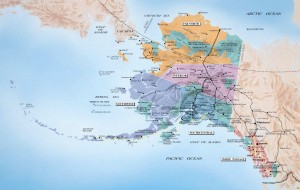 Until recently, I had never given much thought to historic events concerning Alaska. It wasn’t that I wasn’t interested, but rather that other places occupied my mind. Nevertheless, with the recent trip Bob and I took, Alaska has found a place in my mind and heart. Does that mean I have the Alaska Bug…well maybe, because if you offered me a free trip, I would be there with bells on. That said, I noticed the fact that today is a hugely significant day in Alaska’s history. Alaska became a state on December 7, 1959, the 50th state, Hawaii joined the union on August 21, 1959. It is very strange to think that it took almost 172 years to acquire all 50 states, and the final two joined within my lifetime. In our minds, we rather expect that all the states would have been within the first hundred years of each other, but such was not the case at all. Nevertheless, all but two states were within the first 125 years, with only the last two joining 47 years later.
Until recently, I had never given much thought to historic events concerning Alaska. It wasn’t that I wasn’t interested, but rather that other places occupied my mind. Nevertheless, with the recent trip Bob and I took, Alaska has found a place in my mind and heart. Does that mean I have the Alaska Bug…well maybe, because if you offered me a free trip, I would be there with bells on. That said, I noticed the fact that today is a hugely significant day in Alaska’s history. Alaska became a state on December 7, 1959, the 50th state, Hawaii joined the union on August 21, 1959. It is very strange to think that it took almost 172 years to acquire all 50 states, and the final two joined within my lifetime. In our minds, we rather expect that all the states would have been within the first hundred years of each other, but such was not the case at all. Nevertheless, all but two states were within the first 125 years, with only the last two joining 47 years later.
Alaska was first discovered in 1741 when a Russian expedition led by a Danish navigator named Vitus Bering sighted the Alaskan mainland. Before long Russian hunters were making trips into Alaska, and their presence wreaked havoc on the Aleutian people, who had been relatively disease free prior to their exposure to foreign diseases. The first permanent Russian colony in Alaska was established on Kodiak Island in 1784 by Grigory Sheliknov. Settlements spread across the west coast of North America during the 19th century, with the southernmost fort located near Bodega Bay in California. By the 1820’s, the Russians were spending less and less time in the new world, and the British and Americans were allowed to trade in Alaska…after a few diplomatic conflicts. By the 1860s, Russia was nearly bankrupt, and so they decided to offer Alaska for sale to the United States, because they had expressed an interest earlier. The purchase took place on March 30, 1867 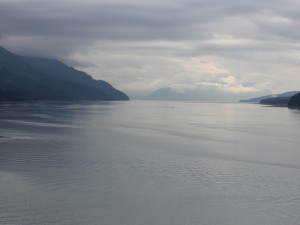 when Secretary of State William H Seward…I wondered where some of the names came from…signed the agreement and the United States purchased Alaska for 7.2 million…which was about two cents an acre…quite a deal really. Nevertheless, the purchase was ridiculed by Congress and the place was called “Seward’s Folly”, “Seward’s Icebox”, and President Andrew Johnson’s “polar bear garden” for some time. Still, the Senate ratified the purchase of this vast land that measured one fifth of the size of the continental United States.
when Secretary of State William H Seward…I wondered where some of the names came from…signed the agreement and the United States purchased Alaska for 7.2 million…which was about two cents an acre…quite a deal really. Nevertheless, the purchase was ridiculed by Congress and the place was called “Seward’s Folly”, “Seward’s Icebox”, and President Andrew Johnson’s “polar bear garden” for some time. Still, the Senate ratified the purchase of this vast land that measured one fifth of the size of the continental United States.
Settlement of the new territory was very slow. It seemed that people didn’t feel comfortable about this cold, desolate wilderness, where the sun didn’t act like it did in the rest of their world. Nevertheless, all their apprehension was quickly forgotten with the discovery of gold in 1898. People moved to Alaska in droves to try to make their fortune. In my travels to Alaska, I had the opportunity to watch a movie about the Klondike Gold Rush. While people did find gold, it came at a heavy price, and many people paid the ultimate price. This land was an unforgiving place. Those who were not prepared for it’s harshness, soon found out what it took to live there, and not everyone could do so. It didn’t make them less manly, it just wasn’t for everyone…gold or no gold.
Still, those people who came to Alaska and felt an instant connection, knew in their hearts that this harsh, vast wilderness had somehow gotten into their blood. That is how Alaskans feel about their state to this day. Not everyone is cut out for it, and they do have a tendency to laugh and joke a bit about the light weights who go home, but they also understand that the ones who stay are a bit of a rare breed. In years gone by, we would have called them Mountain Men, and I suppose that fits the early Alaskan people, but by the same token, they would not have made it either, had it not been for the wisdom of the Aleutian people concerning their health. There weren’t all kinds of things like antibiotics, and immune system boosters then. And fruits and such were not plentiful either. But the Aleutian people knew of ways to get vitamin C and other things to prevent disease.  Even so, at that time, people did not stay permanently in Alaska. They summered there. Many people still do. They just don’t like the winters there. And yet, if you look, there are areas of Alaska…along the coast, like Anchorage that is actually warmer than places like Chicago. Of course, the interior just doesn’t fall into the warm category, with temperatures reported as low as -65° is some places. I think I might want to get out of there for the winter too. Nevertheless, Alaska is an amazing state, and one that I would love to visit again. Not only is it big in size, but everything there seems huge. The mountains are amazing, and the glaciers awe inspiring. If you ever get the chance to visit our 49th state, it is a trip you will never forget…believe me.
Even so, at that time, people did not stay permanently in Alaska. They summered there. Many people still do. They just don’t like the winters there. And yet, if you look, there are areas of Alaska…along the coast, like Anchorage that is actually warmer than places like Chicago. Of course, the interior just doesn’t fall into the warm category, with temperatures reported as low as -65° is some places. I think I might want to get out of there for the winter too. Nevertheless, Alaska is an amazing state, and one that I would love to visit again. Not only is it big in size, but everything there seems huge. The mountains are amazing, and the glaciers awe inspiring. If you ever get the chance to visit our 49th state, it is a trip you will never forget…believe me.

